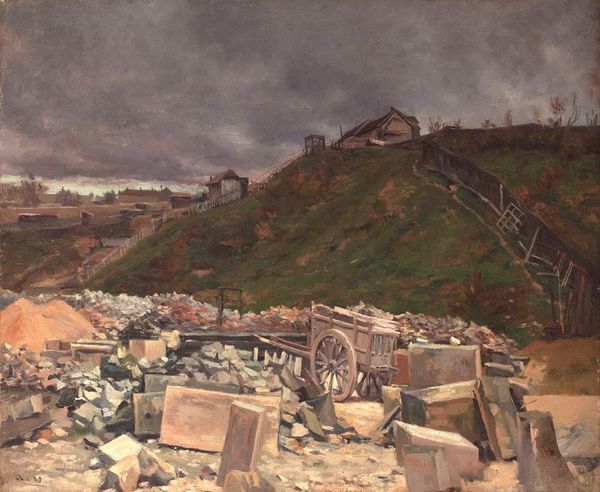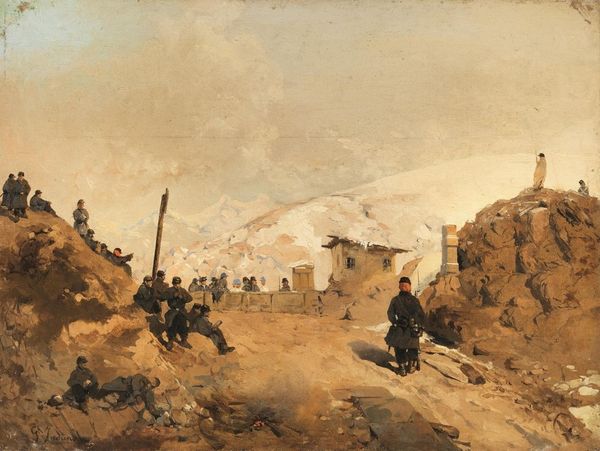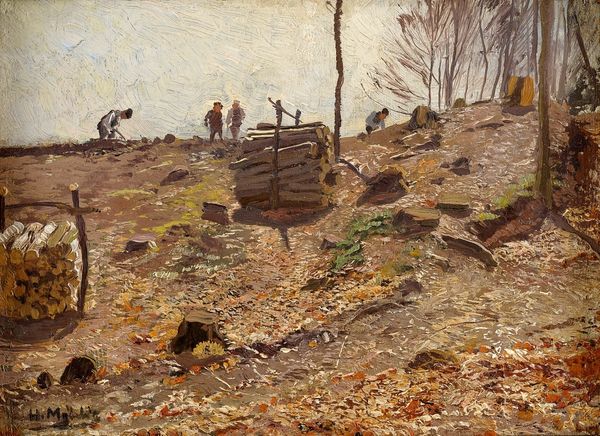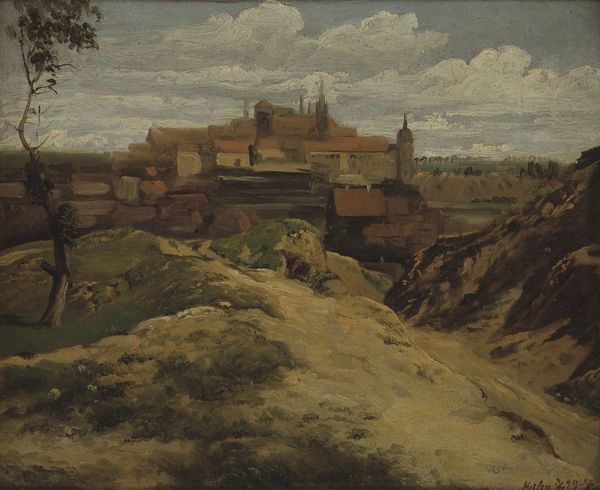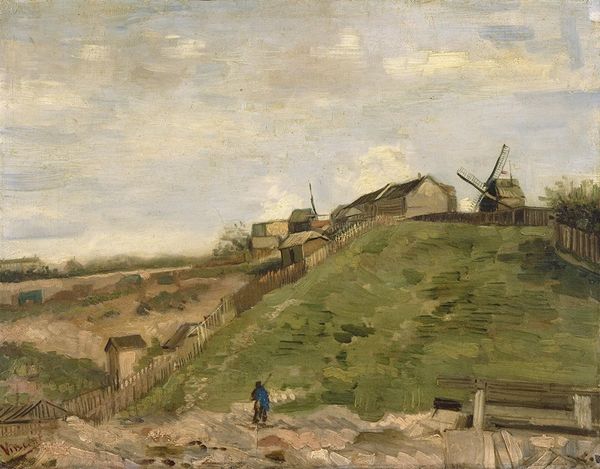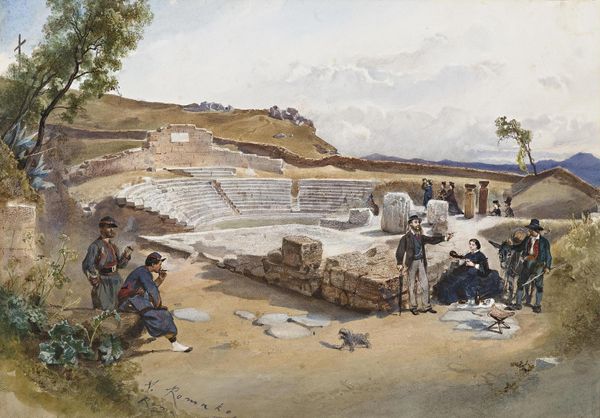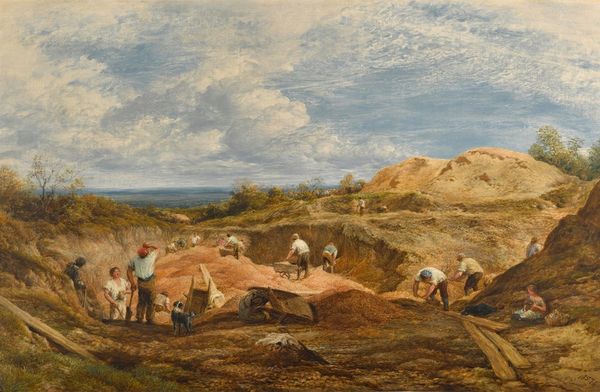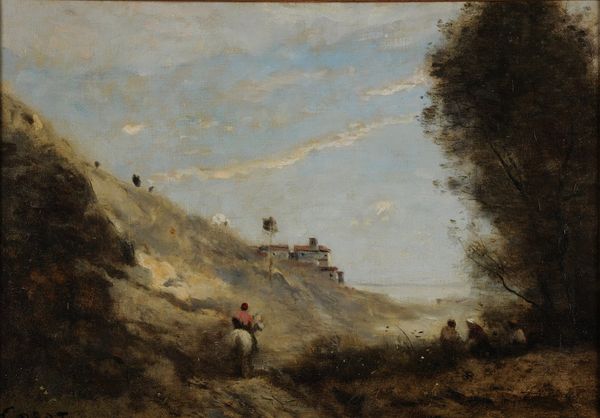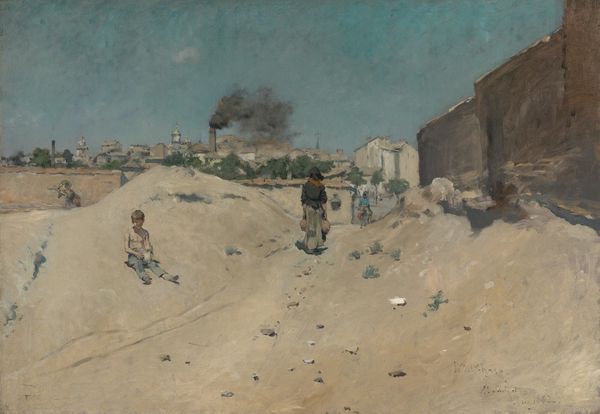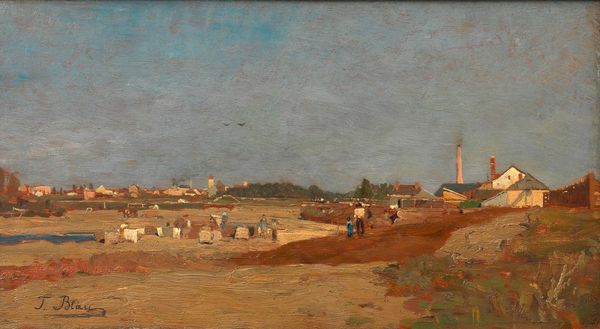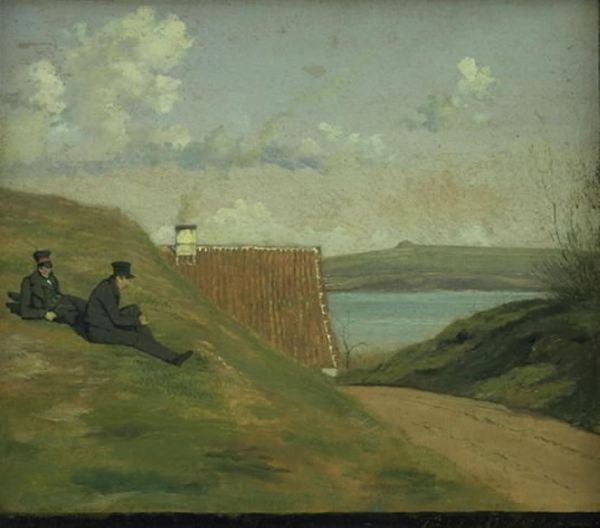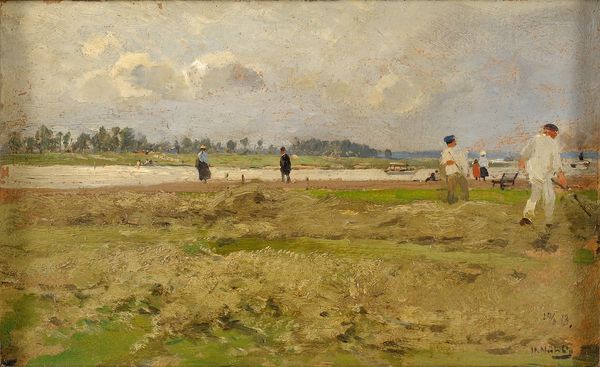
painting, oil-paint
#
painting
#
impressionism
#
oil-paint
#
landscape
#
oil painting
#
genre-painting
#
realism
Dimensions: overall: 71.12 × 91.44 cm (28 × 36 in.) framed: 99.38 × 119.7 × 8.26 cm (39 1/8 × 47 1/8 × 3 1/4 in.)
Copyright: National Gallery of Art: CC0 1.0
Curator: What strikes you most about this quarry scene? There's a looming quality to it. Editor: A sort of solemn grandeur, yes, but also a feeling of melancholy. It's so...beige. The sky is heavy, pressing down. Makes me think of relentless labor and industry slowly consuming nature. Curator: That feeling certainly resonates. We’re looking at "The Quarry of Monsieur Pascal near Nanterre" painted around 1875 by Jean-Charles Cazin. It offers a glimpse into the industrialized landscape just outside of Paris at the time. Editor: The layers of the quarry remind me of the levels of the underworld, maybe even something like Purgatory, where each figure seems trapped in their repetitive tasks. The muted palette, dominated by browns and creams, reinforces this sense of confinement. Are these laborers meant to echo Sisyphus and his rock? Curator: It's a valid observation. Cazin's choice of subject matter—the working class, the industrial environment— aligns him with the Realist painters like Courbet, although his handling is softer, more tonal. The quarry itself represents France's burgeoning industrial sector but it comes at the expense of those who break their backs for every block mined. This becomes even more clear if you analyze other art during the Industrial Revolution that romanticizes manufacturing without showing human struggle. Editor: Interesting. And the lone figure in the foreground, his back to us… he's a bit like a psychopomp, a guide. Is he observing the labor? Overseeing it? Judging it, perhaps? I'm really interested in the horse-drawn cart being loaded, the men perched on scaffolds above. Each of them are tiny and insignificant looking but also powerful when viewed as a group. Curator: Considering Nanterre's proximity to Paris, it makes one wonder whether this scene of industrial extraction isn't a commentary on the city's relentless hunger for resources. Nanterre provided much of the plaster for the city’s buildings. We must also account for what Nanterre already symbolizes, its connection to the patron saint of Paris, Saint Geneviève. It represents so many interwoven aspects of French culture. Editor: I hadn't considered that layer of connection, of sainthood associated with an urban center devouring what sustains it. A potent contrast and another layer of meaning! This painting continues to reveal complexities, inviting us to consider progress, cost, and the symbolism of relentless industry. Curator: Indeed, it makes this landscape far more than just a record of a place, imbuing it with social and perhaps even spiritual commentary.
Comments
No comments
Be the first to comment and join the conversation on the ultimate creative platform.
